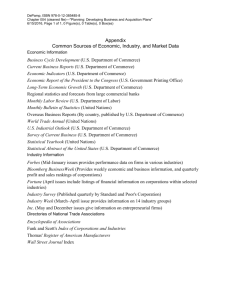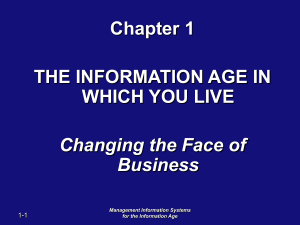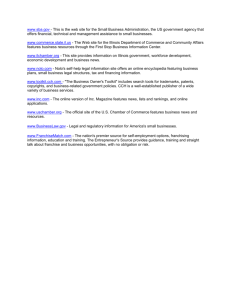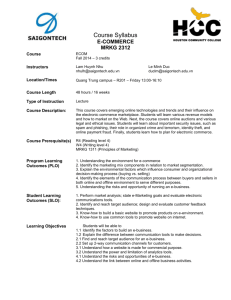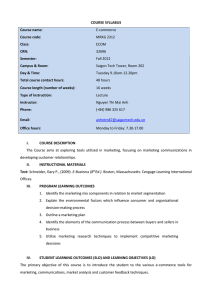MIS 70 Section Midterm Study Guide – Section 1
advertisement
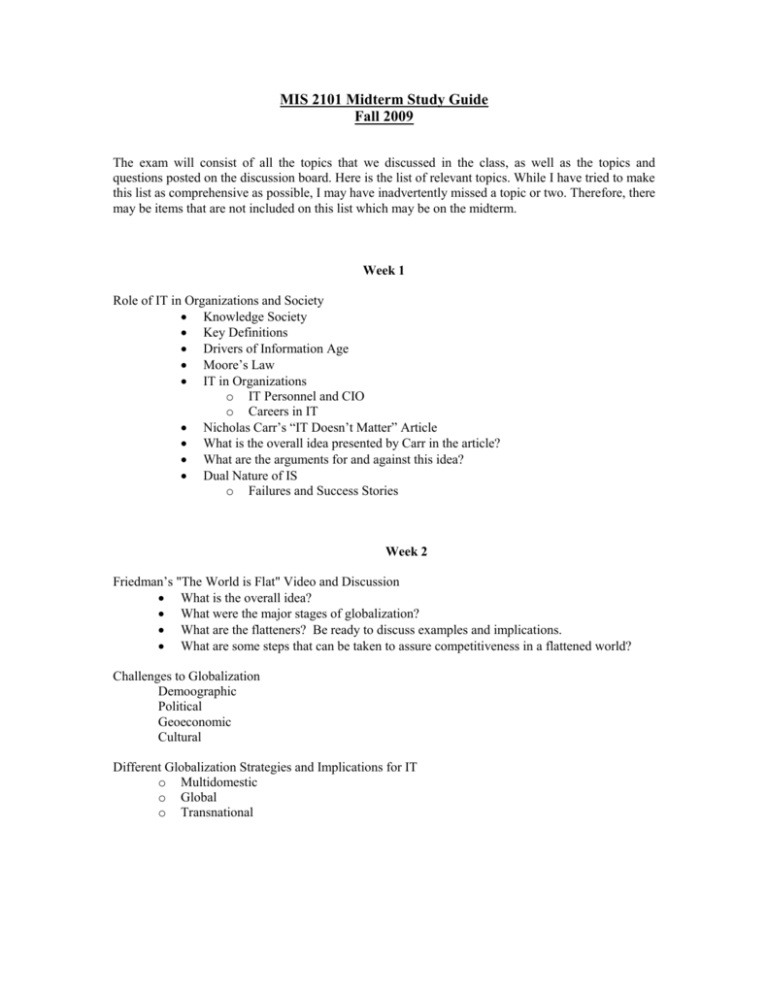
MIS 2101 Midterm Study Guide Fall 2009 The exam will consist of all the topics that we discussed in the class, as well as the topics and questions posted on the discussion board. Here is the list of relevant topics. While I have tried to make this list as comprehensive as possible, I may have inadvertently missed a topic or two. Therefore, there may be items that are not included on this list which may be on the midterm. Week 1 Role of IT in Organizations and Society Knowledge Society Key Definitions Drivers of Information Age Moore’s Law IT in Organizations o IT Personnel and CIO o Careers in IT Nicholas Carr’s “IT Doesn’t Matter” Article What is the overall idea presented by Carr in the article? What are the arguments for and against this idea? Dual Nature of IS o Failures and Success Stories Week 2 Friedman’s "The World is Flat" Video and Discussion What is the overall idea? What were the major stages of globalization? What are the flatteners? Be ready to discuss examples and implications. What are some steps that can be taken to assure competitiveness in a flattened world? Challenges to Globalization Demoographic Political Geoeconomic Cultural Different Globalization Strategies and Implications for IT o Multidomestic o Global o Transnational Week 3 Electronic Commerce Common Types of Electronic Commerce (B2B, B2C, etc) What are they? Be ready to give specific business examples of each type. Be ready to give examples related to the key concepts of electronic commerce Mass customization Integration Collaboration Transaction support Ecommerce Revenue Models Search Engine Marketing and Search Engine Optimization Trends in E-commerce Online Social Communities Mobile Commerce What is Digital Rights Management (DRM) Related to E-Auction Fraud, what are some of the key types? (for example: bid luring, bid shielding) Internet taxation --- What are the arguments for and against? What is net neutrality? Weeks 4 Internal Information Systems Levels of an Organization Type of Decisions they make and Information needed Transaction Processing Systems, Management Information Systems, and Executive Information Systems --- How do they differ? Who uses them? What are they used for? (Understand the examples we discussed) Where do they get their data? What do they do? Which requires the most control and security? Which requires the weakest (least) control and security? Which has the greatest detail? Which has the least detail? Digital Dashboard Other concepts: Decision Support Systems What-if Analysis Text Mining Visualization and Data Mining Intelligent Systems Groupware Knowledge Management Systems Week 5 Business Processes Definition Need for Improvement BPR Systems Development Life Cycle (SDLC) Phases What are they? What is the purpose of each phase? Systems Analysis What is it? What are the major steps in analysis? What problems can occur in analysis? How can they be handled? How would you analyze the existing systems in a company if you were considering buying the company and you only had a day or two to make an evaluation? Process Models and MIS What is Process Modeling? What are the types of DFD’s we discussed (e.g. context diagram vs level 0 vs level 1, etc)? How are they different? What do the symbols in a DFD mean? What are the major characteristics of processes? (e.g. What happens if there is too much structure in a process, or to little?) Buying vs building? Outsourcing



